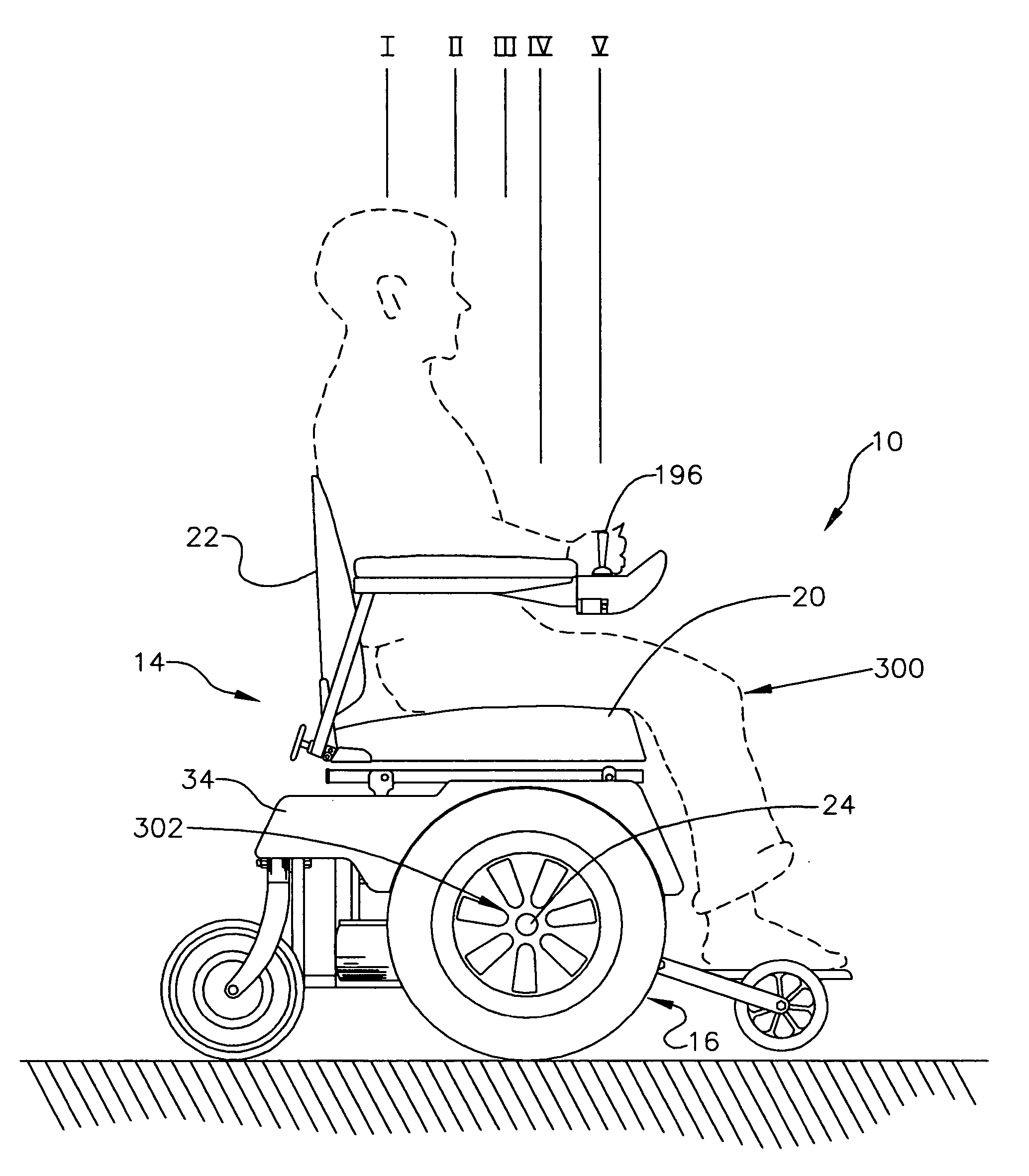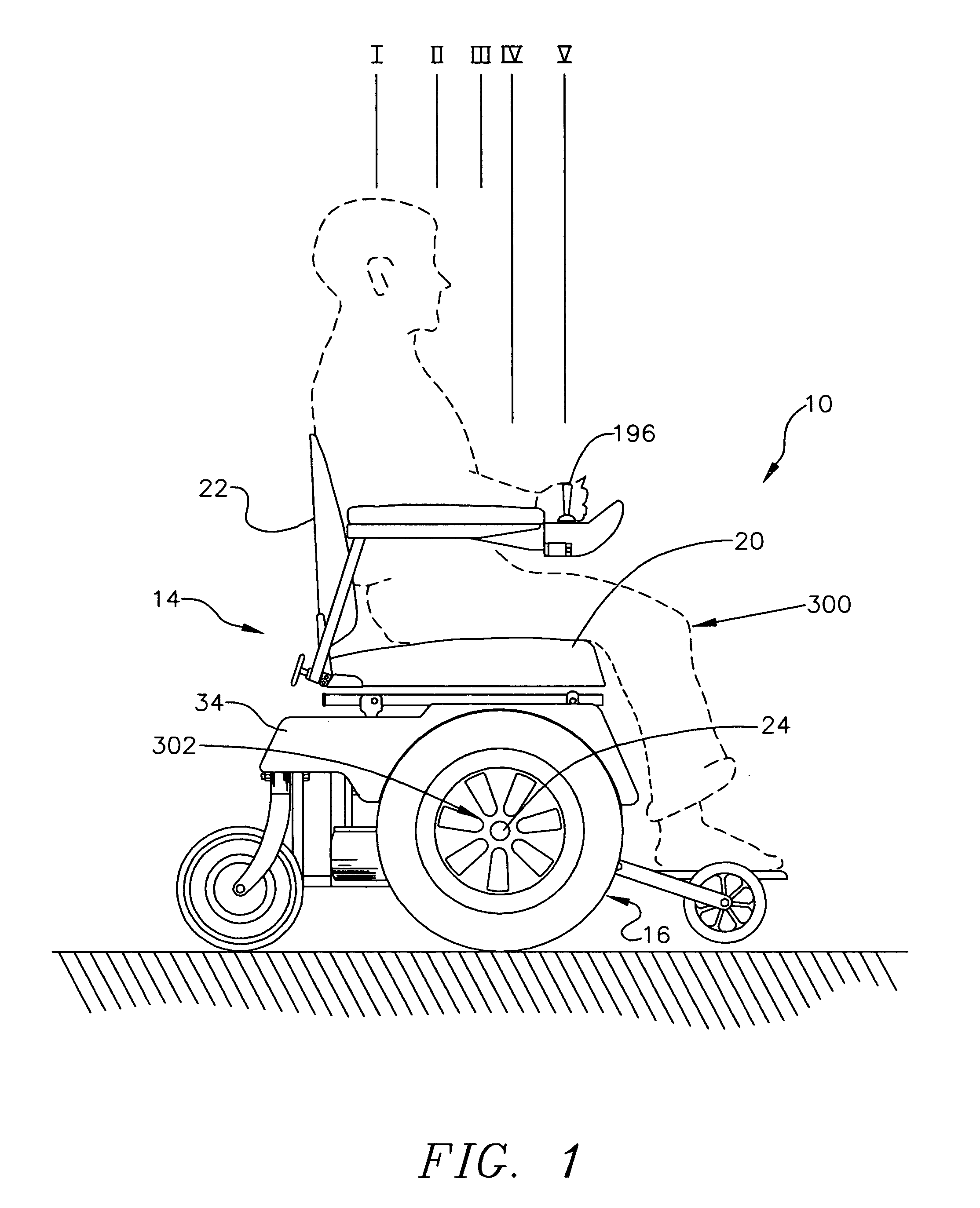Curb-climbing power wheelchair
a power wheelchair and wheelchair technology, applied in the field of wheelchairs, can solve the problems of unnecessarily forward extension, injury of the handicapped person under certain conditions, and all suffer from a common deficiency
- Summary
- Abstract
- Description
- Claims
- Application Information
AI Technical Summary
Benefits of technology
Problems solved by technology
Method used
Image
Examples
Embodiment Construction
[0032] Referring to the drawings in general and to FIGS. 1 through 6 in particular, where like numerals identify like elements, a power wheelchair illustrating certain aspects of the invention is shown and is designated generally by the numeral 10. Power wheelchair 10 includes a frame designated generally as 12, and a seat designated generally as 14 supported by frame 12. A pair of drive wheels, each of which is designated generally as 16, are rotatably connected to frame 12 and are rotatable about transverse axes under a central portion of seat 14.
[0033] As fully described in U.S. Pat. No. 5,944,131, the disclosure of which is incorporated herein by reference, human beings have a center of perception located within the skull, referred to herein as the “cranial center of perception.” This cranial center of perception is generally perceived by a person to be located behind one's eyes, centrally located from left to right within the head and at a front to back location approximately ...
PUM
 Login to View More
Login to View More Abstract
Description
Claims
Application Information
 Login to View More
Login to View More - R&D
- Intellectual Property
- Life Sciences
- Materials
- Tech Scout
- Unparalleled Data Quality
- Higher Quality Content
- 60% Fewer Hallucinations
Browse by: Latest US Patents, China's latest patents, Technical Efficacy Thesaurus, Application Domain, Technology Topic, Popular Technical Reports.
© 2025 PatSnap. All rights reserved.Legal|Privacy policy|Modern Slavery Act Transparency Statement|Sitemap|About US| Contact US: help@patsnap.com



